Getting into habits regarding working methods can be really liberating. You only have to think of Morandi and the way his limited subject matter and studio discipline created ultimate freedom for him. I have been used to making my landscapes from thumbnail sketches done in the landscape and then making my paintings in the “tranquility of the studio”, a well tried and tested almost Victorian attitude. Like Bonnard and others I find painting in front of the landscape impossible, there is simply too much information to process, and like lots of artists I will see detail too early and the resulting painting won’t work.
I am more used to summing up my experience of being in a place when I am away from it. My paintings are therefore studio based, but have their origin in real experience and hard observation and understanding. But I admire plein air painters very much and am currently reading accounts of the work of northern Californian painters, the Society of Six, artists like Seldon Gile and August Gay. I also admire the work of William Gillies. It’s interesting that the artists I admire so much are more interested in making paintings of a place, not pictures of places. Robert Newton and Annabel Keatley, both Rowley artists, make paintings not pictures of places.
So not wanting to fly off to Italy or France this summer, we drove to the Scottish Borders to holiday and try to make en plein air works. I managed just four. The first two are small and very tentative and self conscious. I disliked having a small audience watching me. The last two are a bit larger and more free, and because I was alone I could work more unselfconsciously, and I think they are fresher.
Its a good time to extend the way that I work. Back in the studio I still have the initial drawings, but the paintings done outside might add an extra dimension to the studio paintings. I wouldn’t want to copy the plein air oil studies, but may wish to transfer the energy of the marks from them to my studio paintings. It’s interesting to see if I can be open enough to use the outdoor studies to add an extra dimension in terms of colour, pattern, light, texture and layering of the painted surface to the indoor work.
PS: Here’s how the plein air paintings developed in the studio:
Paul Finn / The Rowley Gallery


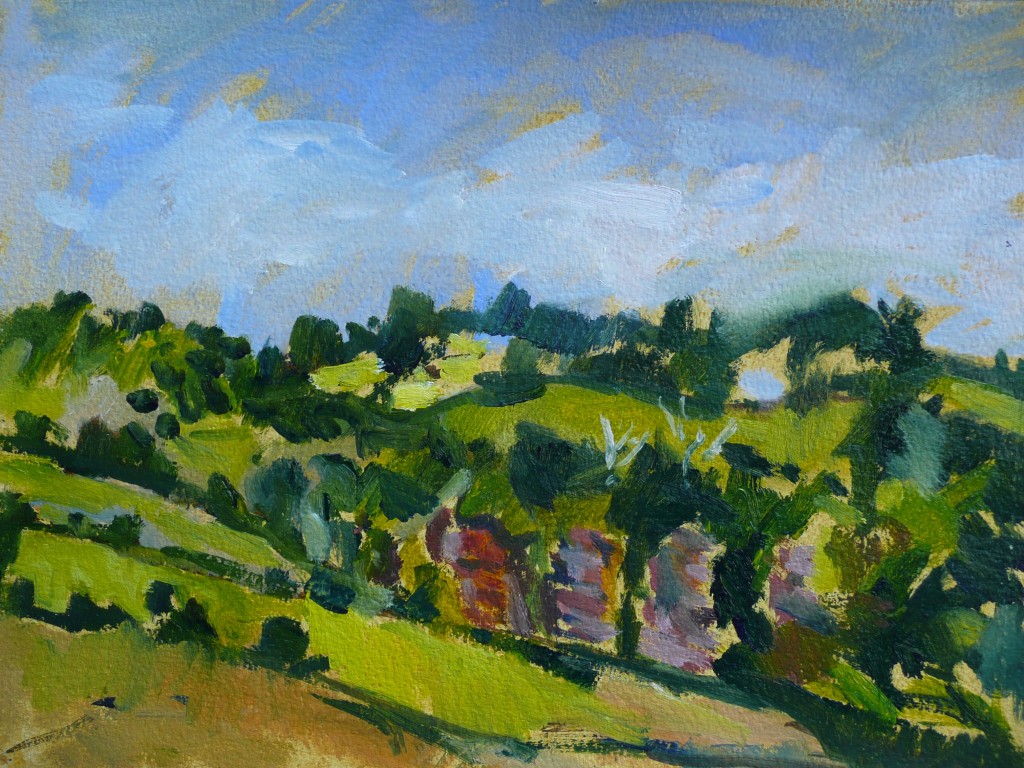
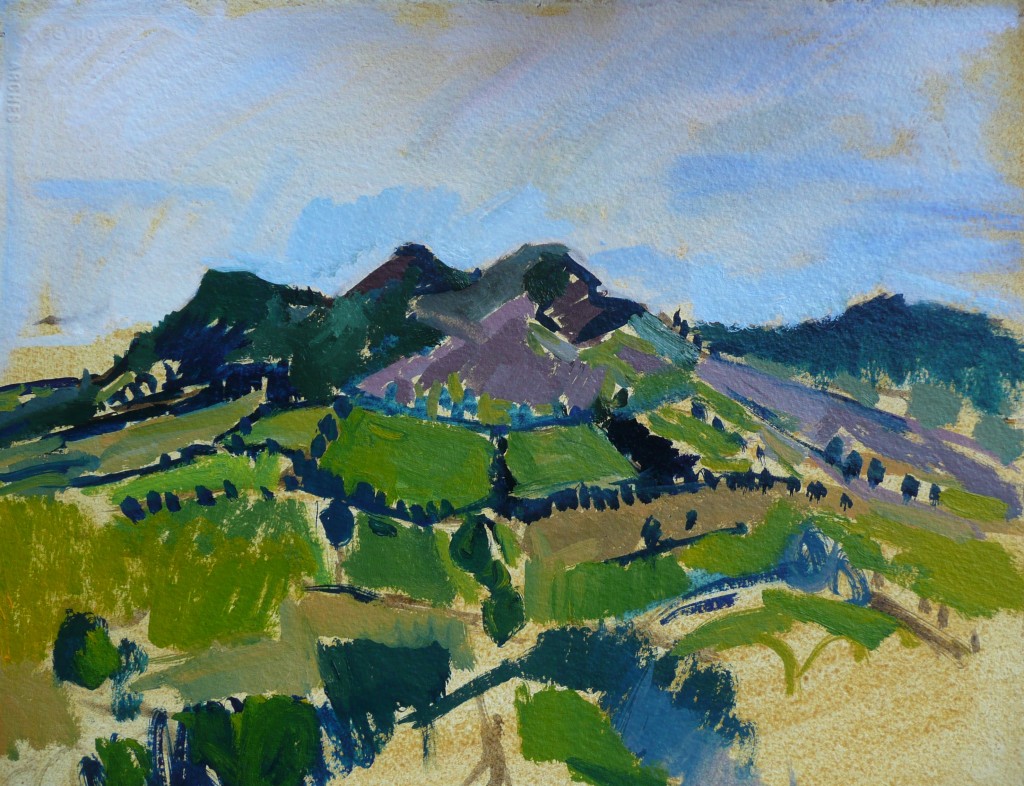
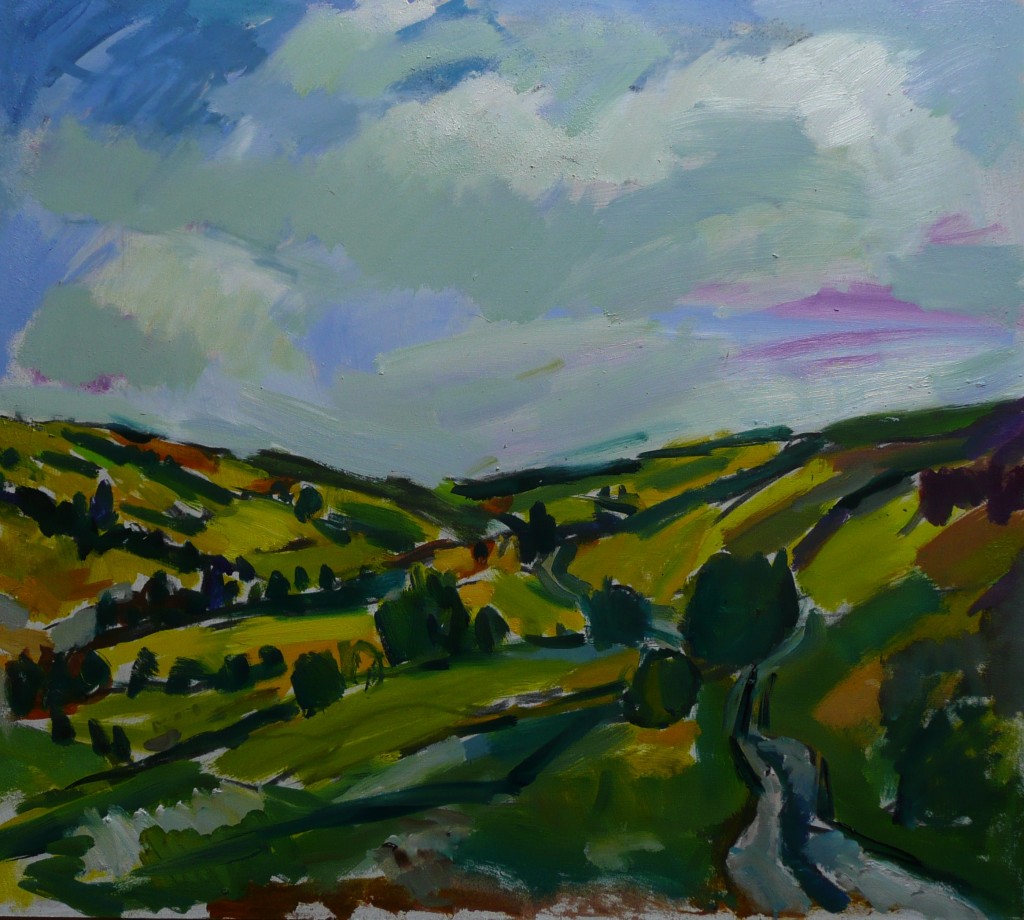
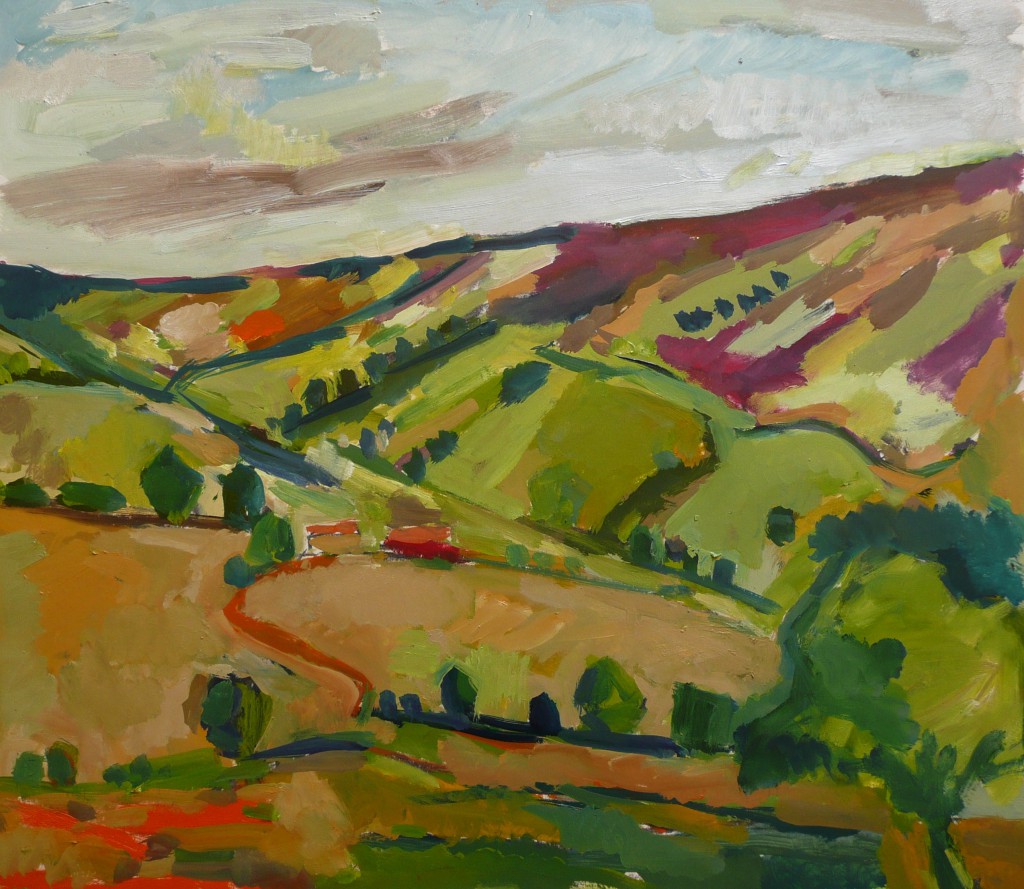
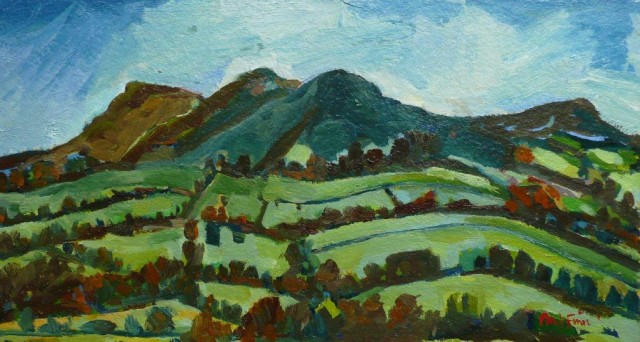
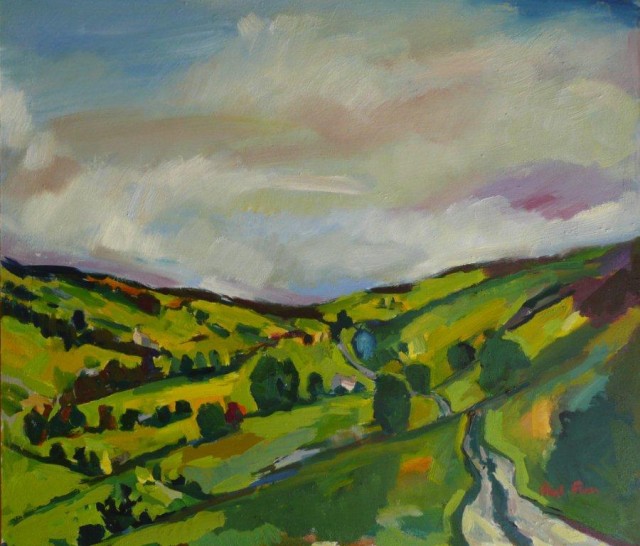
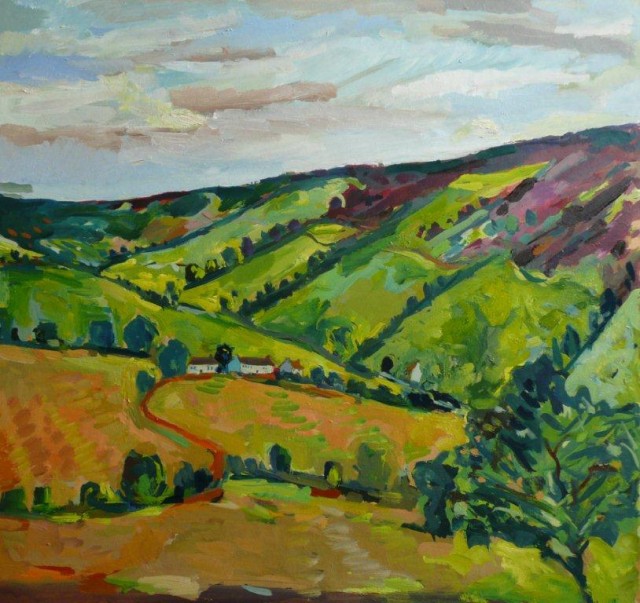
I think that the more ‘plein air ‘ painting one attempts, the easier it gets to synthesise the elements of the picture and capture the spirit of the place. It might be good practice to do lots of outdoor painting and discard most of the unsuccessful ones. I know from my own often futile attempts that it is too easy to try to include too much obvious detail. It is very uncomfortable working outside indeed; I know how you feel Paul. Painting outside has really helped me to understand skies! I’ve been painting imagined skies for years in the studio and not getting them quite right. PAUL
………… by the way, I like the plein air studies.
Paul, there is a magic to those plein air paintings, perhaps it’s the distillation of the senses into something coherent, a painting and not a picture. You painted what you saw, the outcome is sublime and they really shine. I think you can dispense with the new studio now! Get outside, in fact I am going to do more of the same, rather more tentatively. Great work!
Congratulations Paul on your perseverance despite the unwelcome audience. And you have managed to keep the original movement and diversity of colour even though you’ve finished them in the peace of your studio, which is hard to do. It seems like this is a great way to work for you. Looking forward to seeing some more!